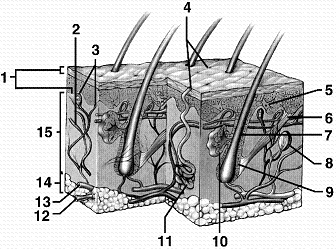Achromobacter, Alcaligenes, and Bordetella are all:
a. urea positive.
b. oxidase negative.
c. nonglucose utilizers.
d. lactose fermenters.
C
The genera discussed in this chapter are considered together because most of them are usually MacConkey positive, oxidase positive, and nonglucose utilizers. They are a diverse group of or-ganisms whose specific morphologic and physiologic features are presented later in this chapter in the discussion on laboratory diagnosis.
You might also like to view...
In an agricultural field where pesticides are regularly sprayed, there are always some insects
that survive due to some innate resistance based on their genetic makeup. These are the ones that then reproduce so that in future generations there are more insects/pests that are resistant to the pesticides. Over time, this may give rise to an entire population that is resistant to the pesticide. This is an example of
a. homology. b. natural selection. c. experimentation. d. classification
Refer to Figure 40-1. Which labeled portions of the skin would be affected by UV light?

a. 1 and 5
b. 1 and 15
c. 5 and 15
d. 5 and 14
e. 1, 14, 15
Linked genes are usually ________
A) found on the X chromosome B) found on the Y chromosome C) codominant D) located close together on a chromosome
Which prokaryotic nutritional group use organic substances for carbon and photons for energy?
A. Photoautotrophs B. Chemoautotrophs C. Photoheterotrophs D. Chemoheterotrophs E. Methanoheterotrophs